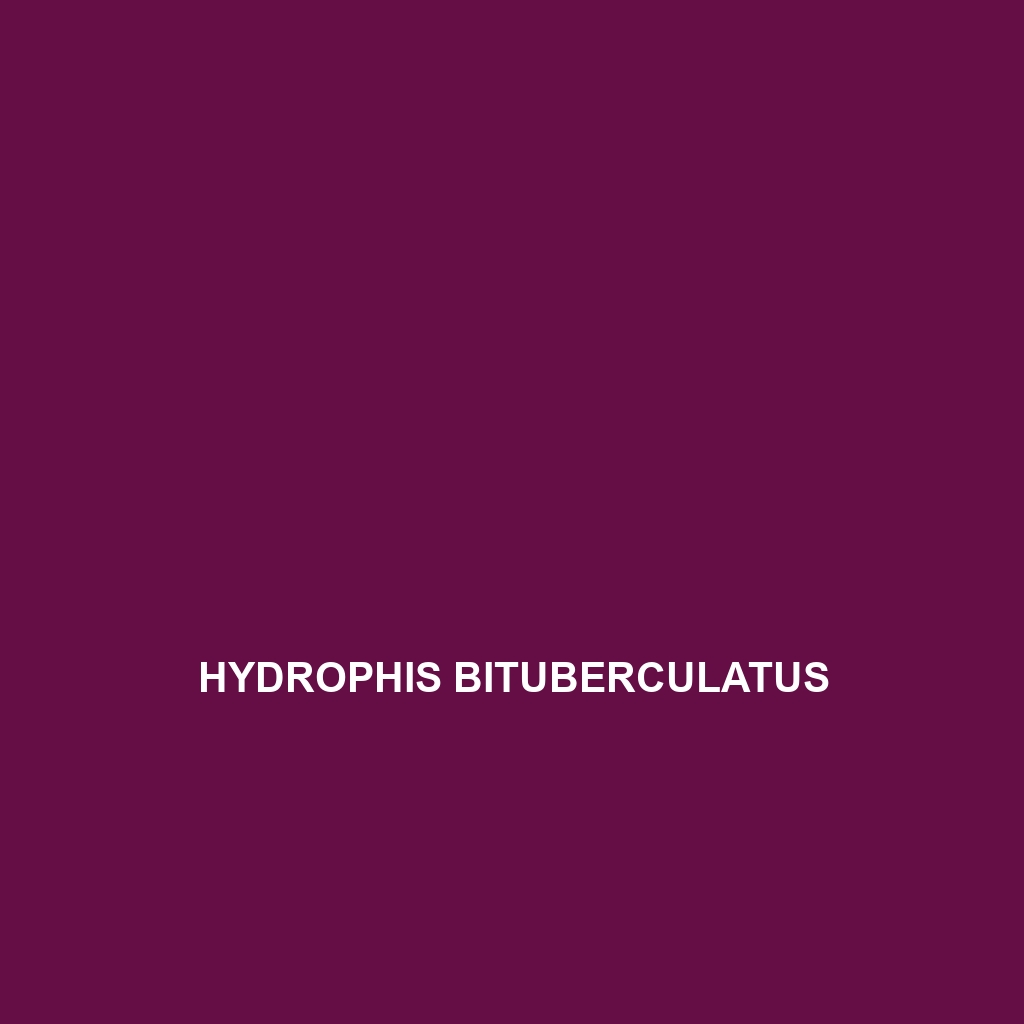Common Name
Hydrophis bituberculatus
Scientific Name
Hydrophis bituberculatus
Habitat
Hydrophis bituberculatus, commonly known as the yellow-lipped sea krait, predominantly inhabits marine environments, particularly in the coastal waters of the western Pacific Ocean. This species is frequently found in areas with coral reefs and shallow lagoons, making them an integral part of these vibrant aquatic ecosystems. They are particularly prevalent around the coastlines of Southeast Asia, including nations such as Indonesia, Malaysia, and the Philippines, where warm waters and rich biodiversity create a suitable habitat. These snakes thrive in tropical to subtropical climates and are often spotted basking on beaches or rocky shorelines, demonstrating a strong affinity for marine habitats.
Physical Characteristics
Hydrophis bituberculatus is distinguished by its elongated, flattened body that reaches an average length of about 1.2 to 1.5 meters (4 to 5 feet). The coloration of this species is particularly striking, featuring a dark blue to black body adorned with bright yellow bands that encircle its body, giving it a unique appearance in the marine world. These bands typically become more pronounced towards the anterior section of the snake. Furthermore, they possess a distinctive, paddle-shaped tail that aids in swimming, a characteristic feature of many marine snakes. The yellow-lipped sea krait also has a small head with large, round eyes, which are adapted for underwater vision, making it a compelling subject of study for marine herpetologists.
Behavior
Diet
Hydrophis bituberculatus is primarily a carnivore, feeding mainly on fish and eels that inhabit shallow marine environments. Their diet is supplemented by other small marine creatures such as crustaceans. They utilize their keen sense of smell and excellent swimming capabilities to hunt effectively, often swimming close to the seabed to ambush their prey. This species exhibits a unique feeding pattern; after catching their prey, they can digest it entirely before emerging for another meal. Remarkably, they are also known to have the ability to consume relatively large prey, which is facilitated by their highly flexible jaw structure.
Reproduction
The reproductive cycle of Hydrophis bituberculatus is intriguing and showcases their adaptation to marine life. These snakes are ovoviviparous, meaning they give birth to live young rather than laying eggs. The mating season occurs in the warmer months, often coinciding with the peak of their feeding season, ensuring adequate nutrition for the developing young. Gestation lasts approximately six months, after which females typically give birth to about 4 to 15 live young. The offspring are fully formed and capable of swimming upon birth, which enhances their chances of survival in predator-rich environments. Maternal care is minimal; however, juveniles possess an instinctual ability to hunt from a young age.
Conservation Status
The conservation status of Hydrophis bituberculatus is currently classified as “Least Concern” according to the IUCN Red List. However, this does not imply that they are free from threats. Factors such as habitat destruction, pollution, and climate change pose significant risks to their population. Additionally, they face threats from illegal fishing and bycatch in commercial fisheries. Conservation efforts are crucial for maintaining their populations, including habitat protection and management practices that minimize marine pollution.
Interesting Facts
One of the most intriguing aspects of Hydrophis bituberculatus is its ability to hold its breath for extended periods while hunting underwater, allowing it to stay submerged for up to 30 minutes. This remarkable adaptation not only highlights their prowess as hunters but also emphasizes their evolutionary success as marine reptiles. Another fascinating fact is the unique coloration of the yellow-lipped sea krait, which serves as both camouflage and a warning to predators, thanks to its bright patterns that are difficult to ignore.
Role in Ecosystem
Hydrophis bituberculatus plays a vital ecological role within its marine habitat. As a predator, it helps regulate fish populations, contributing to the overall health of coral reef ecosystems. By preying on various species, they maintain a balance within the food web, preventing overpopulation of certain fish species that could lead to imbalances. Additionally, their presence indicates a healthy marine environment, making them important bioindicators for conservation efforts. Protecting this species ultimately aids in preserving marine biodiversity and ecosystem stability.
